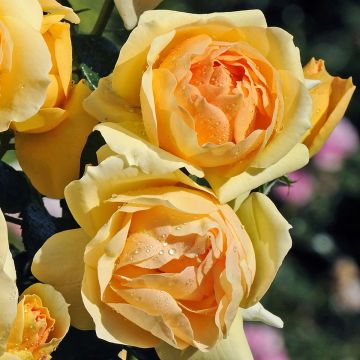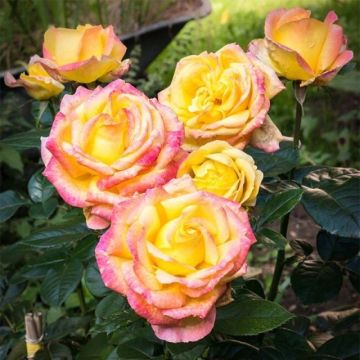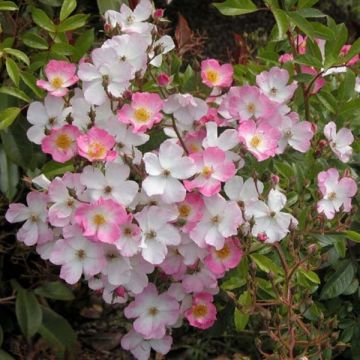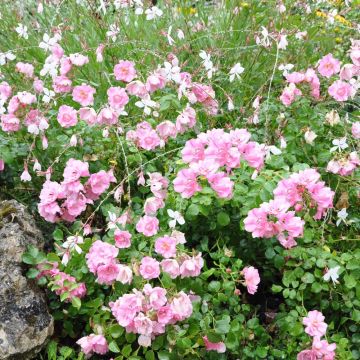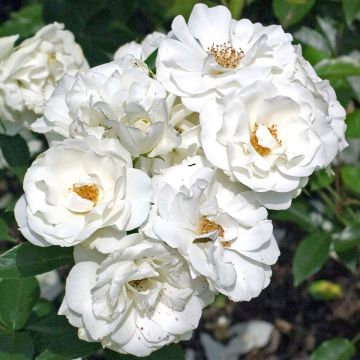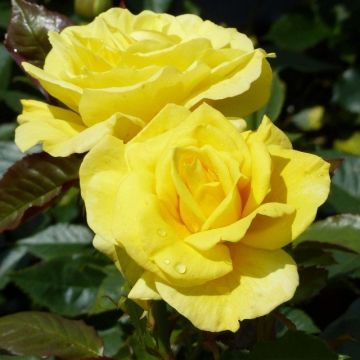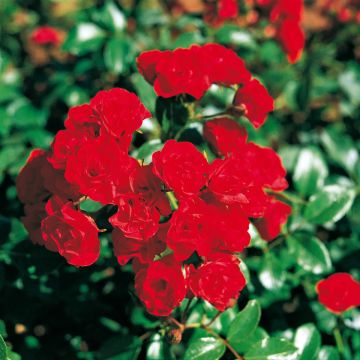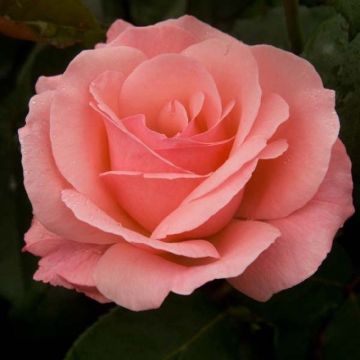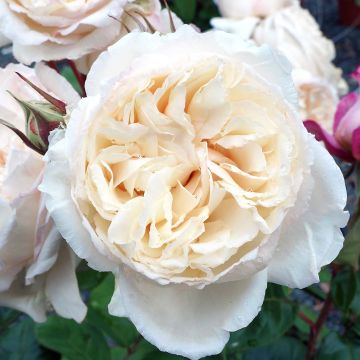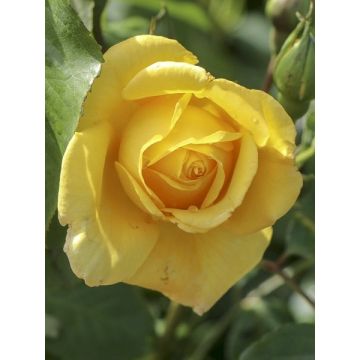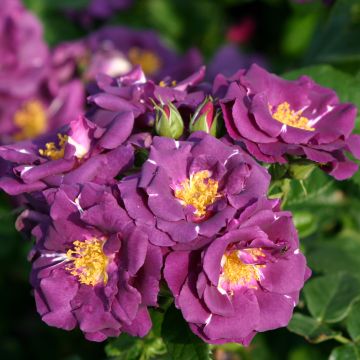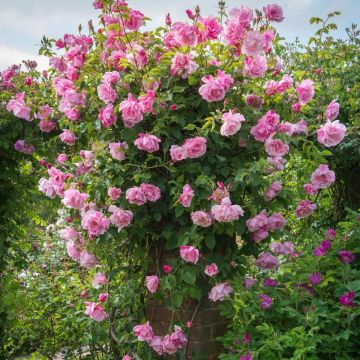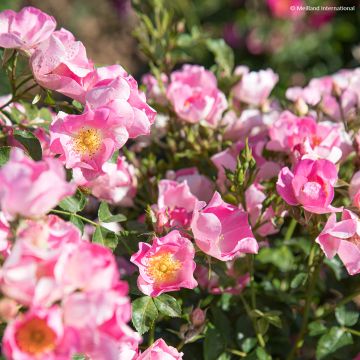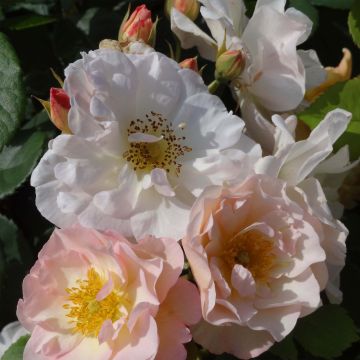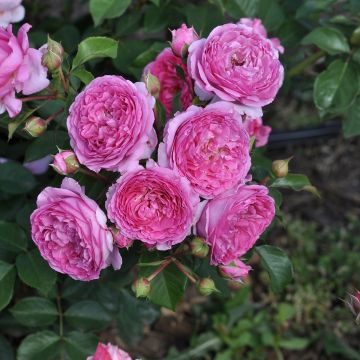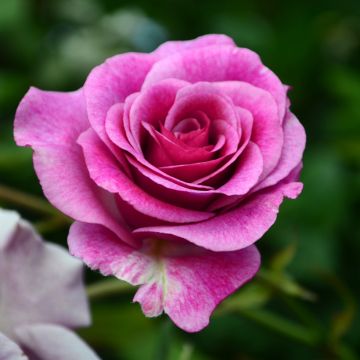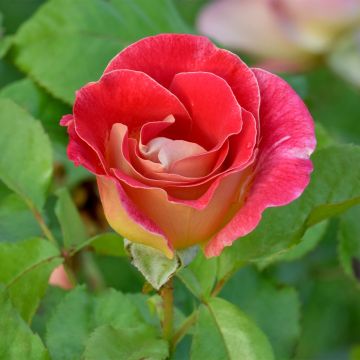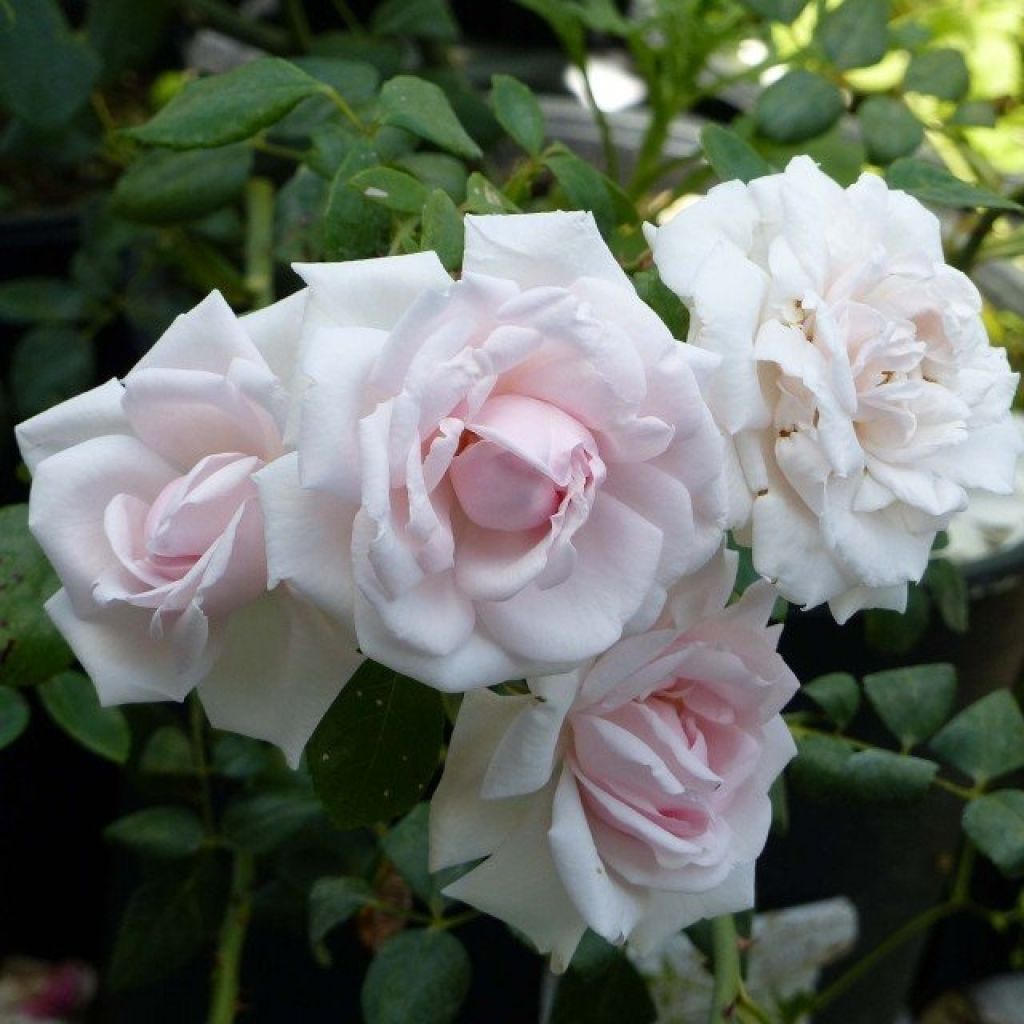

Rosa x wichuraiana 'New Dawn' - Weeping Standard Rose
Rosa x wichuraiana 'New Dawn' - Weeping Standard Rose
Rosa x wichuraiana New Dawn
Memorial Rose, Wichura's Rose
This item cannot be shipped to the selected country
Oversize package delivery charge from €6.90
Oversize package delivery charge from €6.90
Delivery to Corse prohibited
More information
Schedule delivery date,
and select date in basket
This plant carries a 6 months recovery warranty
More information
We guarantee the quality of our plants for a full growing cycle, and will replace at our expense any plant that fails to recover under normal climatic and planting conditions.
Oversize package: home delivery by special carrier from €6.90 per order..
Express home delivery from €8.90.
Oversize package: home delivery by special carrier from €6.90 per order..
Express home delivery from €8.90.
Delivery to Corse prohibited: UE law prohibits the import of this plant from mainland France to Corse as part of the fight against Xylella fastidiosa. Please accept our sincere apologies.
More information


Does this plant fit my garden?
Set up your Plantfit profile →
Description
The 'New Dawn' Standard Rose forms a small tree crowned with trailing branches, transforming into a true fountain of roses in early summer, blooming more or less regularly throughout the summer with a beautiful second flush in autumn. It produces charming, medium-sized, rumpled roses, displaying a delicate pinkish and pearly colour, very pale on the edges and slightly richer in the heart of the flower. This fully bloomed rose bush emits a light fruity fragrance. It is a magnificent plant that should be showcased in the garden!
Standard roses are created by grafting one type of rose, like New Dawn, onto a different type of rose stem, such as Rosa canina, R. laxa, or R. multiflora. The graft is done at a specific height, usually 110-120 cm (43-47in) from the ground on a single, well-vertical stem. In areas with very cold winters, protecting the rootstock during the winter season may be necessary.
The 'New Dawn' Rose is a climbing mutation of the variety 'Dr. Van Fleet', obtained in 1930 by Somerset Rose in England. It carries the genes of the Wichura Rose (synonym Rosa luciae), a vigorous botanical species from eastern Asia. Its arching branches are very thorny, and its small foliage is a vibrant medium green with a satin finish. It can be slightly susceptible to black spot and powdery mildew, depending on the growing conditions. This deciduous foliage falls in autumn. 'New Dawn' blooms abundantly in early summer and then re-blooms to some extent during the summer if it doesn't lack water. The autumn flowering is regular, abundant, and prolonged. Its flowers are cup-shaped doubles with a diameter of 8 cm (3in), slightly rumpled, although one can already see modern roses' rounded and turbinate shapes. Grouped in small clusters, they are composed of 20 to 39 petals in a very tender and fresh silvery pink, slightly richer towards the centre of the flower, becoming almost white when fully mature.
Obtained by Somerset Rose in 1930.
The 'New Dawn' Standard Rose is best planted in a prominent position, in the centre of a flower bed, among perennials or low bushes, in a row along a pathway, near a patio or even in a large container on a balcony. It can also be planted in groups of 3, arranged in a triangle, or as a solitary plant on a lawn. It pairs well with perennial geraniums (Geranium Blue Cloud, Anne Folkard, Nimbus, Orion), bellflowers (lactiflora, rapunculoides), catmints, snapdragons, foxgloves... Standard roses are perfect for adding volume to beds of bush roses or ground cover roses.
Report an error about the product description
Plant habit
Flowering
Foliage
Botanical data
Rosa
x wichuraiana
New Dawn
Rosaceae
Memorial Rose, Wichura's Rose
Cultivar or hybrid
Other Tree Roses - Stem Roses
Planting and care
Rose bushes need sunlight for 4-5 hours daily, but protecting them from the strong sun and wind is best. They grow best in loose, permeable soil that is rich in humus. The soil should be well-cultivated and rich enough, but they can also grow in any soil.
If you're planting them in a pot, loosen the soil to a depth of 10 inches and add a base amendment like blood, fish and bone at the bottom of the planting hole. Position the plant and cover the top of the root ball with 1 inch of soil. Fill in the hole, press down the soil, and water generously to eliminate air pockets. Water regularly during dry weather for a few weeks to help the roots develop. Use special rose fertilisers to promote flowering.
To make your climbing roses bloom more, bend and tie the branches during the summer. The branches can grow up to 3 feet per week. Each time you bend them, they'll produce a lateral shoot that ends in a bunch of flowers. Don't be afraid to do this; you'll have beautiful blooms.
In areas with harsh winters, covering the grafting branch of standard roses (also known as the "trunk") with a thick winter veil is recommended to protect it.
Roses may develop unsightly spots at the end of summer, but this is a natural occurrence and doesn't harm the rose's growth.
Planting period
Intended location
Care
-
, onOrder confirmed
Reply from on Promesse de fleurs
Roses by purpose
Haven't found what you were looking for?
Hardiness is the lowest winter temperature a plant can endure without suffering serious damage or even dying. However, hardiness is affected by location (a sheltered area, such as a patio), protection (winter cover) and soil type (hardiness is improved by well-drained soil).

Photo Sharing Terms & Conditions
In order to encourage gardeners to interact and share their experiences, Promesse de fleurs offers various media enabling content to be uploaded onto its Site - in particular via the ‘Photo sharing’ module.
The User agrees to refrain from:
- Posting any content that is illegal, prejudicial, insulting, racist, inciteful to hatred, revisionist, contrary to public decency, that infringes on privacy or on the privacy rights of third parties, in particular the publicity rights of persons and goods, intellectual property rights, or the right to privacy.
- Submitting content on behalf of a third party;
- Impersonate the identity of a third party and/or publish any personal information about a third party;
In general, the User undertakes to refrain from any unethical behaviour.
All Content (in particular text, comments, files, images, photos, videos, creative works, etc.), which may be subject to property or intellectual property rights, image or other private rights, shall remain the property of the User, subject to the limited rights granted by the terms of the licence granted by Promesse de fleurs as stated below. Users are at liberty to publish or not to publish such Content on the Site, notably via the ‘Photo Sharing’ facility, and accept that this Content shall be made public and freely accessible, notably on the Internet.
Users further acknowledge, undertake to have ,and guarantee that they hold all necessary rights and permissions to publish such material on the Site, in particular with regard to the legislation in force pertaining to any privacy, property, intellectual property, image, or contractual rights, or rights of any other nature. By publishing such Content on the Site, Users acknowledge accepting full liability as publishers of the Content within the meaning of the law, and grant Promesse de fleurs, free of charge, an inclusive, worldwide licence for the said Content for the entire duration of its publication, including all reproduction, representation, up/downloading, displaying, performing, transmission, and storage rights.
Users also grant permission for their name to be linked to the Content and accept that this link may not always be made available.
By engaging in posting material, Users consent to their Content becoming automatically accessible on the Internet, in particular on other sites and/or blogs and/or web pages of the Promesse de fleurs site, including in particular social pages and the Promesse de fleurs catalogue.
Users may secure the removal of entrusted content free of charge by issuing a simple request via our contact form.
The flowering period indicated on our website applies to countries and regions located in USDA zone 8 (France, the United Kingdom, Ireland, the Netherlands, etc.)
It will vary according to where you live:
- In zones 9 to 10 (Italy, Spain, Greece, etc.), flowering will occur about 2 to 4 weeks earlier.
- In zones 6 to 7 (Germany, Poland, Slovenia, and lower mountainous regions), flowering will be delayed by 2 to 3 weeks.
- In zone 5 (Central Europe, Scandinavia), blooming will be delayed by 3 to 5 weeks.
In temperate climates, pruning of spring-flowering shrubs (forsythia, spireas, etc.) should be done just after flowering.
Pruning of summer-flowering shrubs (Indian Lilac, Perovskia, etc.) can be done in winter or spring.
In cold regions as well as with frost-sensitive plants, avoid pruning too early when severe frosts may still occur.
The planting period indicated on our website applies to countries and regions located in USDA zone 8 (France, United Kingdom, Ireland, Netherlands).
It will vary according to where you live:
- In Mediterranean zones (Marseille, Madrid, Milan, etc.), autumn and winter are the best planting periods.
- In continental zones (Strasbourg, Munich, Vienna, etc.), delay planting by 2 to 3 weeks in spring and bring it forward by 2 to 4 weeks in autumn.
- In mountainous regions (the Alps, Pyrenees, Carpathians, etc.), it is best to plant in late spring (May-June) or late summer (August-September).
The harvesting period indicated on our website applies to countries and regions in USDA zone 8 (France, England, Ireland, the Netherlands).
In colder areas (Scandinavia, Poland, Austria...) fruit and vegetable harvests are likely to be delayed by 3-4 weeks.
In warmer areas (Italy, Spain, Greece, etc.), harvesting will probably take place earlier, depending on weather conditions.
The sowing periods indicated on our website apply to countries and regions within USDA Zone 8 (France, UK, Ireland, Netherlands).
In colder areas (Scandinavia, Poland, Austria...), delay any outdoor sowing by 3-4 weeks, or sow under glass.
In warmer climes (Italy, Spain, Greece, etc.), bring outdoor sowing forward by a few weeks.

































